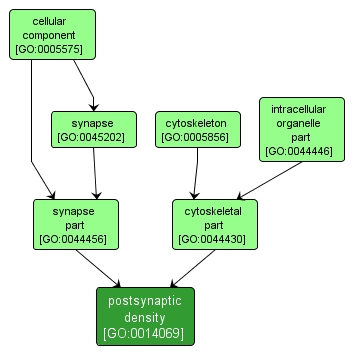| Desc: |
The post synaptic density is a region that lies adjacent to the cytoplasmic face of the postsynaptic membrane at excitatory synapse. It forms a disc that consists of a range of proteins with different functions, some of which contact the cytoplasmic domains of ion channels in the postsynaptic membrane. The proteins making up the disc include receptors, and structural proteins linked to the actin cytoskeleton. They also include signalling machinery, such as protein kinases and phosphatases. |














